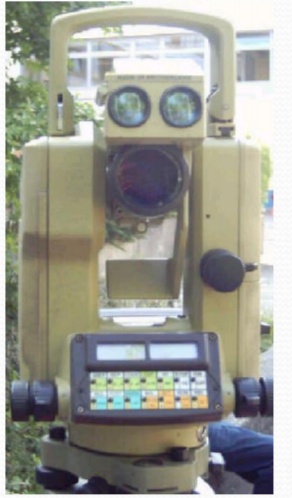Setting Up the Plane table
Fixing the plane table on the tripod stand
Leveling the table
Centering the table
Marking the North-line
Orientation
Orientation by magnetic needle
Orientation by backsighting
The table should be set up at a convenient height. (say about 1m). The legs of the tripod should be spread well apart, and firmly fixed into the ground.
The table should be so placed over the station on the ground that the point plotted on the sheet corresponding to the station occupied should be exactly over the station on the ground. This operation is known as the centering of the table. This may be done using a plumbing fork or U frame.
In this operation, the table top is made truly horizontal. For rough and small scale work, leveling can be done by eye estimation whereas for accurate and large scale work, leveling achieved with an ordinary spirit level. The leveling is specially important in hilly terrain where some of the control points are situated at higher level and some other at lower level. The disleveling of the plane table, throws the location of the point considerably out of its true location.
ORIENTING THE PLANE TABLE
The operation of keeping the table at each of the successive stations parallel to the position which it occupied at the first station is known as orientation. It is necessary when the instrument has to be set up at more than one station.
There are two methods of orienting the table:
Orientation by the Magnetic Needle
Orientation by Backsighting
ORIENTING BY MAGNETIC NEEDLE
This method is used when it is not possible to bisect the previous station from the new station. This method is not much reliable and prone to errors due to variations of magnetic field.
ORIENTING BY BACKSIGHTING
In this method the table is orientated by back sighting through the ray which is drawn from the previous station. This is the most accurate and reliable method of orientation of plane table.








0 Comments